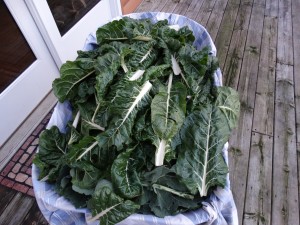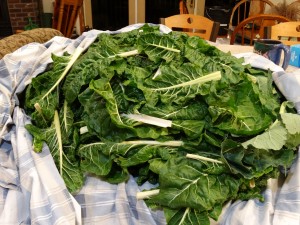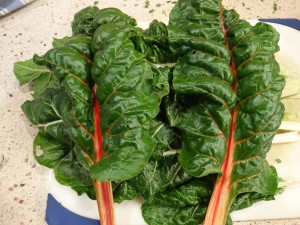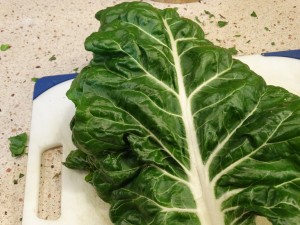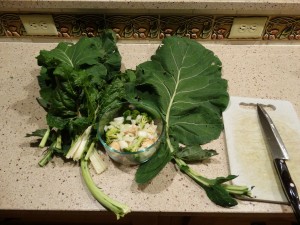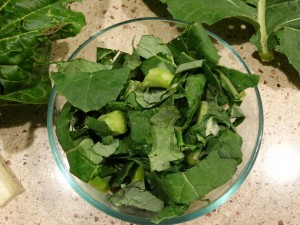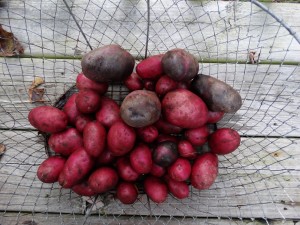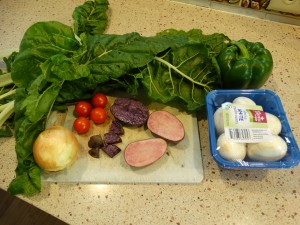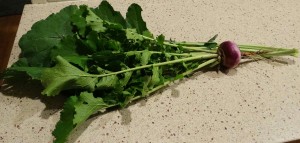Many moons ago, my beautiful girlfriend acquired a sprouter so we could raise babies for eating. It’s truly a wonderful thing to raise babies; then eat them raw in salads and the like. Do not be alarmed… I am NOT talking about baby humans or other animals!! No, no… those would be much too crunchy. Possibly illegal too I think maybe. Rather, the sprouter is a wonderful little kitchen gizmo that’s used to grow plant babies. Some of our favorites are mung bean sprouts and alfalfa sprouts. We often eat them raw but of course mung bean sprouts are very nice when added at the very last stage of cooking up a stir fry.
Several years ago my ravishing honey pie brought home a fairly large packet of seeds labeled “Broccoli for Sprouting,” which had a very colorful picture of a mixed greens salad on the front. I’m guessing there was about half a pound of the very small, round, black seeds in the packet. We sprouted some, but weren’t at all smitten with the results. The flavor was OK, but not anything that really tickled our taste buds. So into the refrigerator went the seed packet to live in harmony with all the garden seeds I keep in there. Our thinking was we’d give them another try some other day.
“Some other day” never arrived. A few years passed, and the big seed packet was all too happy just to sit quietly in the paper bag that houses all my left over seed from previous gardening years. Seems I almost always buy more seed than I ever actually plant, and I can’t bring myself to toss the leftovers. I’ve learned that if seeds are kept dry and cool, like in the refrigerator, they stay viable for several years. Consequently, a small part of the fridge is pretty much always occupied by my seed collection.
We’re not sure how many years the “Broccoli for Sprouting” packet shacked up with the seed collection. However, it became clear to me that these would never know the inside of our sprouter again, so I decided to plant some. I figured, hey, if it’s “broccoli for sprouting” maybe it will grow some broccoli for eating. So way back in 2010, I planted the seeds and waited for the wonderful broccoli to appear.
Seedlings appeared pretty quickly and from what I could tell, pretty much all of them grew into baby plants. As they started crowding up the bed, I did the usual practice of thinning them out and bringing the seedlings into the kitchen for several suppers. Once the plants had plenty of room to stretch out, my sweetie and I noticed that they were very vigorous and had much bigger leaves than we expected. Leaves were abundant but no florets were appearing; which was the whole idea in the first place. As winter neared, still no broccoli. Lots of leaves, but no florets.
All was not by any means lost though. Since both my lovely girlfriend and I both very much enjoy collard greens, kale, and the like; we figured if the plants won’t make broccoli we’ll just harvest the leaves for dinner. Little did we know we were in for such a treat!! The leaves were fleshy and robust like collards, but much more tender. The flavor was similar to collards, but sweet enough to eat raw. And when cooked for just a little bit they were simply delicious. We found a “new” favorite vegetable! Unbeknownst to us, however, was the fact that our “new” favorite vegetable has in fact been an important food plant for several thousand years. It was obviously from the same family as broccoli, but now we just had to know: what the HECK is this amazing plant??
Took me awhile, but extensive research on the interwebs got us the answer: it’s wild cabbage; and bears the Latin name Brassica oleracea. Click here to read more about —>Brassica oleracea. It’s almost unknown here in the US, but in Europe it’s been grown as a food crop for at least 4,000 years. In fact, broccoli, cabbage, and cauliflower all trace their origins to wild cabbage.

Above is a picture of some plants that survived the winter. Plants in the cabbage family are very tough, and survive our Michigan winters pretty much unscathed. If covered in snow, they can even withstand subzero temperatures with no problem. I can’t find any more seed for purchase anywhere except a website in Germany. So, being the seed saver I am, I’m gathering my own to do my part to preserve this wild cabbage. I even have enough to share some with friends and family! As it happens, I’ve found the same plant listed on the Seed Savers Exchange and it’s called German Smooth Kale.
I’ve been saving seeds every year since. And because they make so many seed pods, I don’t feel bad about harvesting young flower clusters for some springtime meals.
Here’s a picture of a flower cluster from a second year plant:

“OOOhh!!,” you might say, “That looks kinda like broccoli!! Only much smaller…” Well it kinda tastes like broccoli too. Yes boys and girls, I’ve decapitated several of the plants and we have enjoyed devouring their reproductive organs in several dishes since spring has sprung. We’ve had them raw, put them in our lunches to microwave them at work, and had several delicious stir fry meals with wild cabbage leaves and flower clusters.
Pretty darn yummy!

